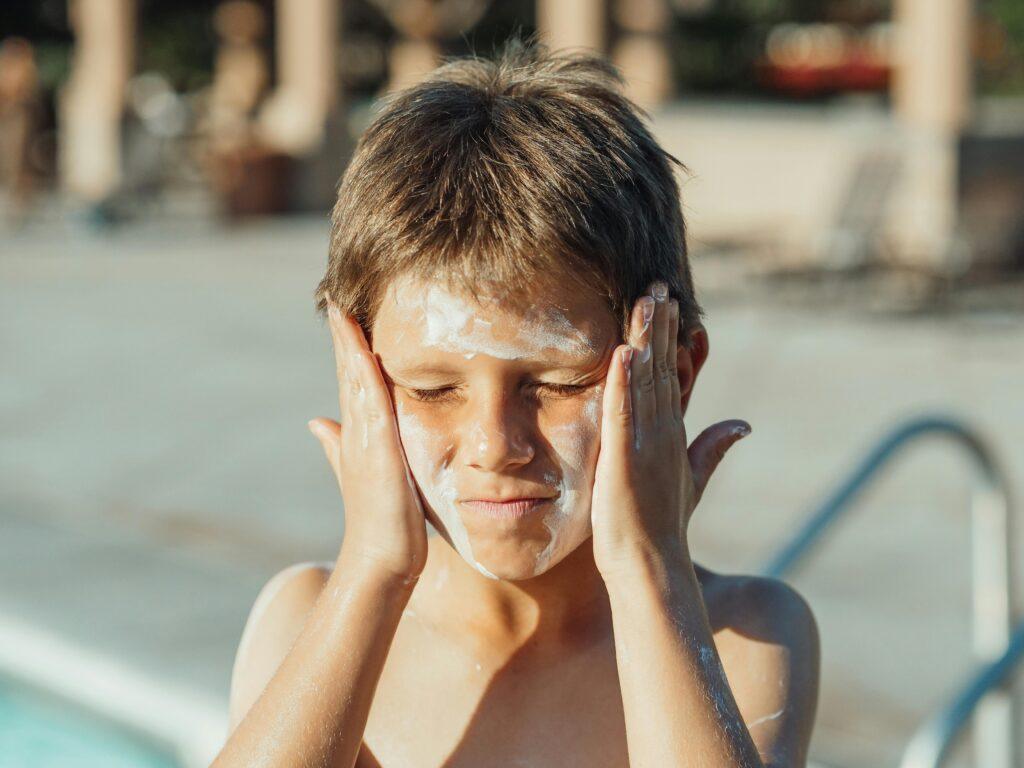
Applying a broad-spectrum sunscreen that shields the face from both UVA and UVB radiation is crucial. It is wise to apply sunscreen generously. One way to protect yourself from sunburn is to liberate sunscreen on your face and neck.
Use everyday household objects such as measuring cups to apply sunscreen evenly on your face and neck.
- Use a teaspoon or mint sprig as a ruler.
- Using measuring spoons isn’t limited to the kitchen. Another purpose for them is to measure out the perfect amount of sunscreen to apply.
- A quarter of a teaspoon, or around a dime’s worth, should cover your neck and face. Add extra as necessary.
Use your fingertips as a ruler.
- You can use your hands to measure the quantity of sunscreen you need for your face, even if you don’t have a measuring spoon at the beach.
- Measure with your fingertip. Note the distance between your fingertip and the first fold in your finger. Generally, the amount of sunscreen recommended for the face is around two pea-sized.
What this means
- The first line of defence against sunburn, skin cancer, and other forms of UV damage is a good old-fashioned sunscreen application to the face.
- Wearing a cap or scarf that blocks the sun’s rays is another strategy to lessen skin damage.
Read Our More Blogs: Surgide Blogs
What is the Importance of Sunscreen SPF and How Do I Choose the Right One?
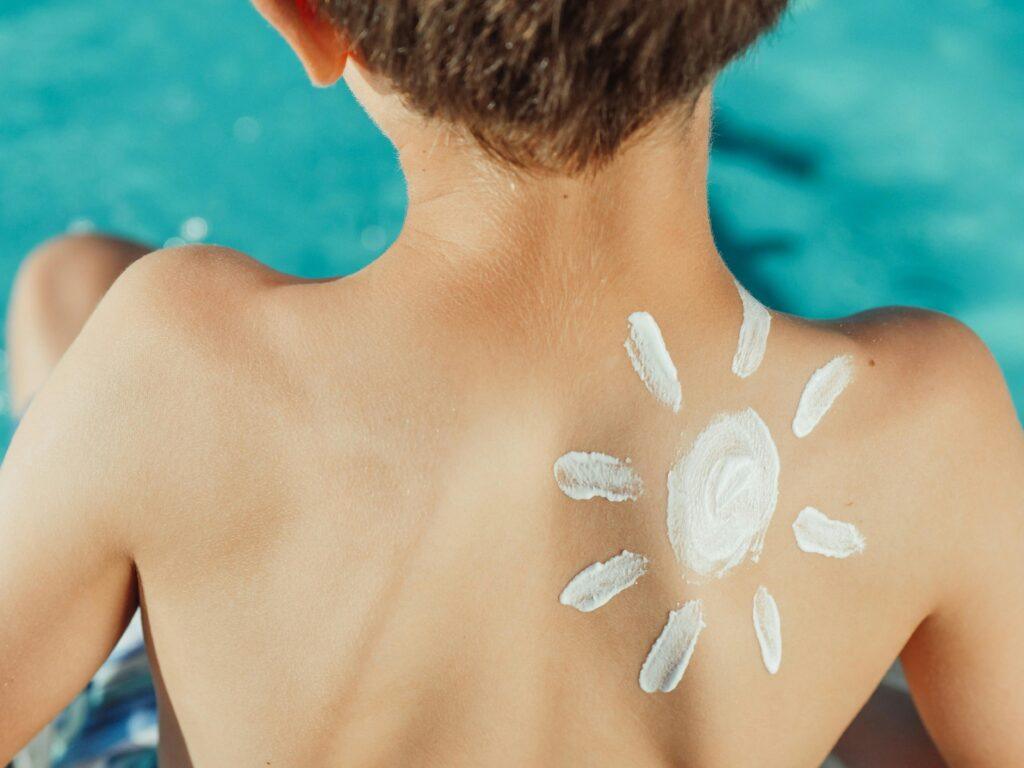
Getting a Handle on SPF
- Toddlers and infants
- Duration
- Categories of
- Sunscreen and permanent makeup
- Key Points
With so many options available, choosing a sunscreen could be challenging. One good place to start is searching for ones with an SPF of 30 or higher. The importance of sunscreen has been drilled into your head a few times if you spend any time outdoors.
While any sunscreen is preferable to none, it’s ideal to use a broad-spectrum sunscreen with an SPF of 30 or higher. These suggestions benefit all skin tones. Also, remember to slather on the sunscreen 30 minutes before hitting the pavement. Please keep reading to understand better sun protection factors and how to use them.
Are sun protection factors important?
Sun protection factor means SPF. Applying sunscreen with an SPF will help protect your skin from harmful UV rays.
The sun emits both ultraviolet A and ultraviolet B photons. Skin drooping and wrinkles are some telltale symptoms of ageing, and UVA rays play a role in this. In addition to causing sunburns, UVB rays are known to be more carcinogenic. UVA and UVB rays can be lethal since they increase the former’s reactivity.
You expose yourself to the sun’s potentially dangerous radiation whenever you’re outside or even near a sunny window. Even if you have fair skin and rarely get a sunburn, that radiation can still damage your skin.
Applying sunscreen helps your skin’s natural defences to ward off the sun’s harmful rays for longer. For instance, compared to unprotected skin, an SPF of 15 offers around 15 times the amount of protection. So, 50 SPF would be fifty times more effective than no sunscreen. Selecting a sunscreen that blocks ultraviolet A and ultraviolet B radiation is known as a broad-spectrum sunscreen.
Does my dark skin still necessitate a high SPF?
The prevalence of fatal skin cancer was greater among Black participants in a study that disproves the common belief that persons with darker skin don’t require sunscreen.
Infant and toddler sunscreen
Sunscreen should not be applied to infants younger than six months (Trusted Source). Still, kids could become sunburnt if they’re not careful. Babies are especially vulnerable to the unwanted effects that sunscreen’s ingredients might produce, so it’s best to avoid using it on them. Babies under six months old should always be in the shade and wear protective clothes to prevent sun exposure.
Ensure that the sunscreen you select for your infant has a minimum SPF of 30. Typically, baby sunscreens have an SPF of 50. It is not necessary to use baby-specific sunscreen, but many contain chemicals that help protect the sensitive skin of infants from sunburn and other side effects.
Does the sunscreen’s SPF affect how long it stays on?
On average, sunscreen lasts two hours. Therefore, it must be reapplied at least every two hours. You may need to reapply more often if you perspire heavily, have burning skin, or are active in water.
Sunscreen Selection
Use a moisturiser or makeup with an SPF 15 base if you don’t spend much time in the sun. In other cases, you should consider what you’ll be doing outside before deciding on sunscreen. You can choose from a wide variety of sunscreens. Get additional information on how to select a sunscreen by reading this.
- Water-resistant sunscreen Even though water-resistant sunscreen is excellent for water sports, it might not be the best choice if your sport involves a lot of physical contact with water. The SPF could end up dripping into your eyes. Keep in mind that no sunscreen claims to be waterproof.
- Sunscreen spray Parents whose children are constantly on the move like to buy this particular brand of sunscreen in bulk. However, some experts are worried about spraying sunscreen and say parents should start with a cream-based sunscreen. The chemicals in spray sunscreen could harm your child’s respiratory health.
- Broad-spectrum sunscreens are the way to go. They contain a broad range of Ingredients that filter both ultraviolet A and UVB rays.
- Eco-friendly sunblock According to Consumer Reports, sunscreens with mineral elements aren’t nearly as effective as those containing chemically active ingredients. Usually, sunscreens labelled as “natural” are made of minerals. One study (Reliable Source) indicated that olive or coconut oil sunscreens offered the best protection for those seeking an all-natural sunscreen. Sunscreens formulated with olive or coconut oil have an excellent natural SPF base due to their respective SPF levels, around 8 and 4, respectively.
- Small vs. large SPF: Be wary of selecting a sunscreen with an extremely low SPF since Consumer Reports discovered that many of these products do not perform as effectively as claimed. After SPF 50, further protection is not available, but a bottle labelled as 50 may contain less SPF. If you’re not sure, choose the 50.
Is it possible to develop a tan while using sunscreen?
Sunscreen does not prevent you from getting a tan. If you plan on spending a lot of time in the water, apply sunscreen frequently because it can easily be rubbed off, sweated off, or rinsed away.
Key Points
Sunscreen is a must-have for protecting skin from the sun’s dangerous UVA and UVB rays. Adults of all age groups and skin tones should use sunscreen with a minimum SPF of 30 when going outside. It is recommended that children older than 6 months use sunscreen with a minimum SPF of 30. However, sunscreen isn’t enough to protect you from the sun’s rays. Shade and protective gear can further lessen the impact of the sun’s rays.
Is There a Time Limit on Sunscreen?
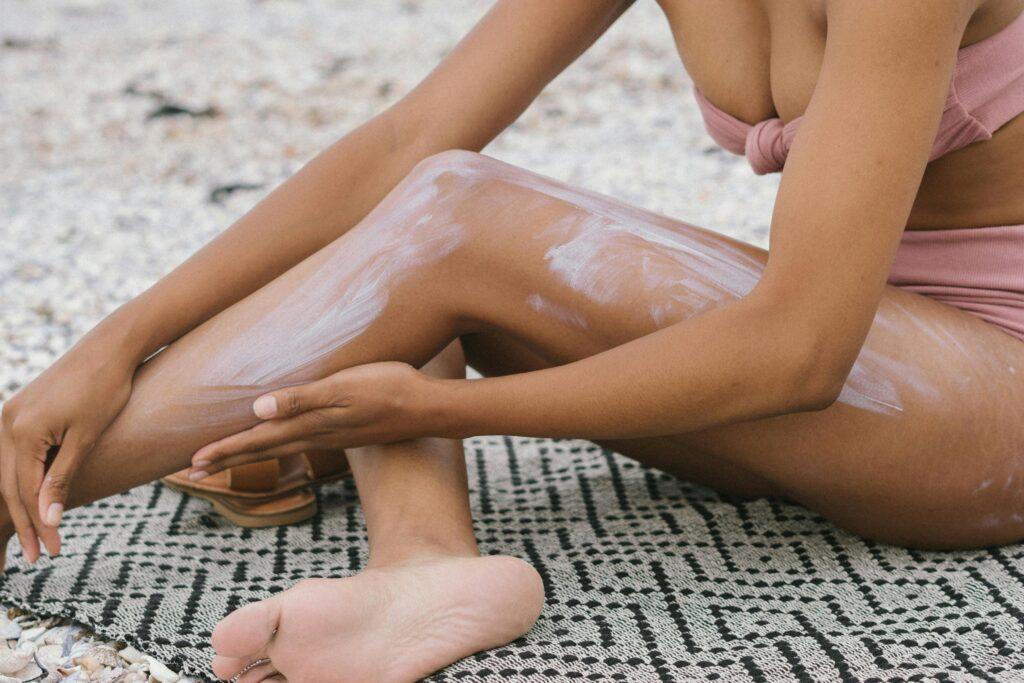
Product longevity
- End Date
- Storage
- Key Points
Sunscreen has an expiration date and may not be as effective as you think if you use an old bottle. You may have asked whether sunscreen expires if left with an old bottle.
When applied, sunscreen keeps skin protected for what amount of time?
According to FDA regulations, all sunscreens must maintain their maximum protection level for at least three years (Trusted Source). Check the expiration date to find out how long your sunscreen will last. This rule does not apply unless the product has a demonstrated shelf life of at least three years.
There is an increased risk of sunburn and skin cancer once SS has expired because its effectiveness in preventing UV radiation decreases with time. Furthermore, prolonged exposure to high temperatures and direct sunshine might diminish the efficacy of SS.
Tell me how to identify an expired sunscreen.
Check the expiration date on the SS container to see if it has gone bad. After this date, the sunscreen may no longer protect you from the sun, so throw it out if you have any leftovers.
Writing down the month and year you bought the SS (maybe with a marker on the bottle) is a brilliant idea because certain nations don’t enforce the use of expiration dates on SS .
Other telltale signs include changes in scent or texture when applied to the skin. Throw it out if it doesn’t smell right or is too thick.
Last but not least, trust your instincts. For instance, sunscreen likely expires after a year of sitting in a hot car.
Properly storing sunscreen
Store sunscreen in a cool, dark area to keep it in good condition. If the container is left exposed to high temperatures or direct sunlight for an extended period, its efficacy may decrease.
If you must apply sunscreen outdoors, wrap the bottle in a towel or find a shady spot to protect it. Be sure to keep it tightly to seal the container. Bring a cooler with you if you plan on spending a lot of time in the sun.
What this means
According to FDA standards, sunscreen has a three-year shelf life. To ensure maximum sun protection, use SS before its expiration date and keep it in a cool, dark area.
Above all else, if your sunscreen’s colour, smell, or substance noticeably changes, you should throw it out. Always discard everything you are unsure of.
Can Sunscreen Stop a Tan?
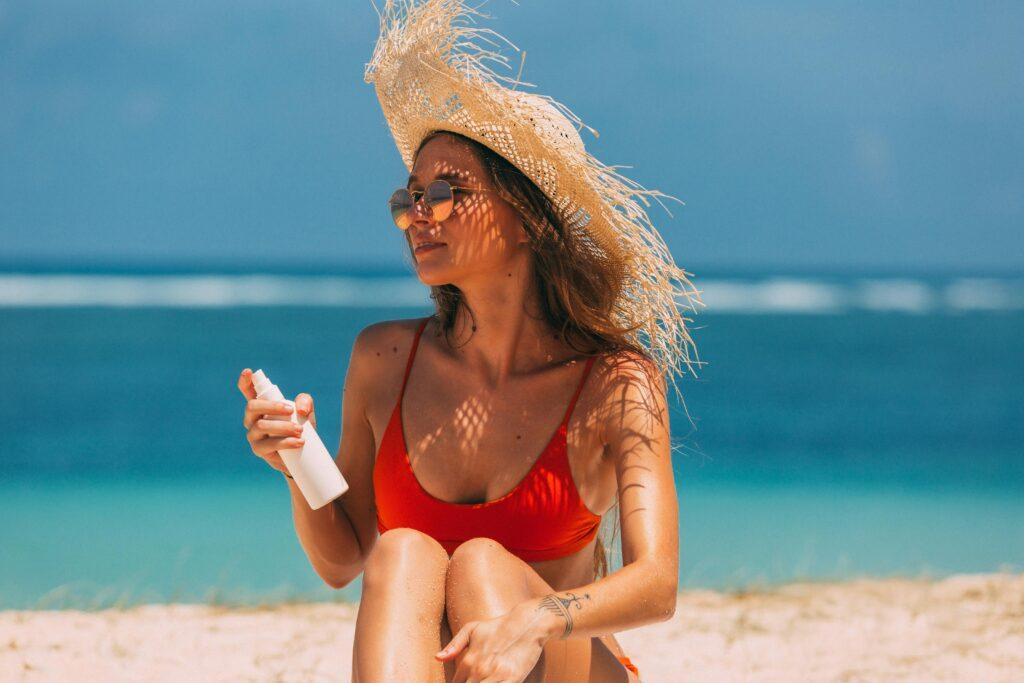
Details about sunscreen
- why is it important?
- Ideal SPF
- When should I consult a dermatologist?
- FAQs
- Key Points
You can still obtain a slight tan even with sunscreen, although it will prevent tanning to a lesser extent. However, you can’t get a “safe tan” anywhere.
According to dermatologists, sunscreen should be worn daily, and for good reason. It’s a good idea to protect yourself from photoaging and skin cancer, whether chemical or physical.
Wearing sunscreen doesn’t guarantee you won’t develop a slight tan. It should be noted that no quantity of intentional tanning is deemed safe.
Please learn more about the sun’s effects on skin health, the limitations of sunscreen, and how it protects your skin.
The Function of Sunscreen
Sunscreen has a chemical and a physical action.
- Sunscreen made of chemicals Typical chemical sunscreens protect skin from harmful ultraviolet (UV) rays by absorbing and modifying photons before they reach the skin. Oxybenzone and octisalate are two examples of chemically based sunscreens.
- Sonnenschutz with a physical component. Physical sunscreens reflect and scatter UV rays, protecting your skin from damage. They use blocking substances like zinc oxide and titanium oxide, among others. The Food and Drug Administration (FDA) recently labelled these substances as GRASE, which means they are generally recognised as safe and effective.
- Ultraviolet Light Looking for a broad-spectrum SS that protects against chemical and physical UV rays should be your top priority, even more so than deciding between the two. UVA and UVB radiation are the names given to these.
When engaging in activities that cause you to become wet from water or sweat, it is wise to use SS resistant to water. This prevents the lotion from evaporating off your skin and exposing it to harmful UV rays.
The process of tan
Always keep in mind that sunscreen is a filter. Reliable Source: It won’t stop the sun from damaging your skin. You can still get a tan to a certain extent.
Sun exposure causes inflammation of the skin in the short term. Your skin adjusts to sunburn by tanning. An extended exposure could result in a more serious burn.
Another consequence of melanin release in the afflicted region is tanned skin.
Cancer and premature photoaging are some of UV radiation’s long-term impacts. To lessen the severity of this damage, use a broad-spectrum sunscreen with an appropriate SPF.
Using sunscreen with an SPF of 15 can lower the risk of melanoma and non-melanoma skin malignancies, such as squamous cell carcinoma, by 40% and 50%, respectively.
Sunscreen: why is it important?
“Broad-spectrum” refers to sunscreens blocking ultraviolet A and UVB radiation. The longer UVA radiation can cause skin damage, including wrinkles. Shorter-wavelength ultraviolet B (UVB) photons are known to produce burns and are likely responsible for most skin malignancies.
Protecting your skin from the sun’s rays is essential to any outdoor activity, but it’s necessary to wear sunscreen during the day. Going to the park, driving, or walking to work or class all fall under this category.
No matter how little, sun exposure can build up over time if you don’t wear sunscreen. Applying an SPF-containing moisturiser to your face, neck, and chest should be a daily ritual.
Ideal SPF
Every sunscreen includes an SPF. Your level of sun exposure determines the optimal sunscreen SPF. Common sunscreens have a lower SPF, but you need a higher one for sun exposure.
Knowing the meaning of SPF numbers is the first step. They don’t provide precise protection, but rather, they don’t show the time it would take for your skin to burn if you didn’t use sunscreen.
For instance, your skin could take 30 times longer to burn with an SPF of 30 than when you’re unprotected. This, however, is conditional on its proper use in the appropriate dose.
An SPF also indicates that some UVB rays, which can age the skin, can still reach the surface.
An SPF of 30 blocks 3% of UVB radiation, while an SPF of 50 blocks 2%. This information is sourced from the Skin Cancer Foundation. Also, sunscreen won’t prevent you from getting a tan.
Use water-resistant sunscreen with an SPF of 30 or higher daily for maximum protection.
If you plan on being in the sun for long periods, including when swimming or doing sports, apply a higher SPF (at least 50 or 100) and reapply it often.
People with albinism, a history of skin cancer, or immunological problems that cause them to burn quickly may require a higher SPF.
When should I consult a dermatologist?
To find out which SPF is best for you, consult a dermatologist. They may even suggest altering the SPF (Trusted Source) based on your location and the time of year. Depending on your location relative to the equator and higher elevations, you may be more exposed to ultraviolet radiation from the sun.
It is recommended that you visit a dermatologist annually for a skin examination. If you’ve ever had skin cancer or tanned frequently, you might need to see them more regularly.
Immediately consult a dermatologist if you notice any abnormalities on your skin. A biopsy may be necessary on any mole or bump that exhibits symptoms such as increasing size, changing colour, bleeding, or itching. A dermatologist’s ability to treat skin cancer improves in proportion to how quickly the disease is identified.
The most deadly kind of skin cancer is melanoma. Getting a tan, whether with or without sunscreen, raises your vulnerability. The likelihood of mortality may be reduced with early diagnosis.
Questions that come up often
- Can you still get a tan if you wear sunscreen? Even with SS, tanning may occur since your skin is still vulnerable to UV rays.
Not only should you reapply SS every two hours, but you should also wear helmets and other protective apparel to further minimise your exposure to the sun.
- Will getting a tan be safe? There is no such thing as a “safe” level of tanning. The more you tan indoors or outdoors, the greater your chance of skin cancer and other skin problems. The experts advise wearing SS with an SPF of 30 every day.
If you want a sun-kissed look without risking sunburn from unprotected sun exposure, try sunless tanning or bronzing lotions.
- Will wearing sunscreen prevent me from getting enough vitamin D? Yes, wearing SS might reduce the amount of vitamin D your skin absorbs from sunlight. However, the AAD suggests taking vitamin D from food sources rather than sunbathing. Good sources include milk, fortified drinks, fish, and egg yolks.
Seek advice from a medical expert regarding vitamin D supplements if your diet lacks this nutrient.
The final verdict
Sunscreen can help reduce skin inflammation and tanning, but it shouldn’t be your primary defence against UV radiation.
You must wear it daily to protect your skin from burns, wrinkles, and cancer. You should reapply it every two hours and after swimming or sweating.
Additional precautions include wearing protective apparel, caps, and sunglasses. Staying out of the sun between 10 a.m. and 2 p.m. and 4 p.m., Trusted Source also helps reduce exposure.
Please avoid tanning beds; they aren’t a safe substitute for sunbathing.
Top-Rated Sunscreen Sprays for Any Time of Year
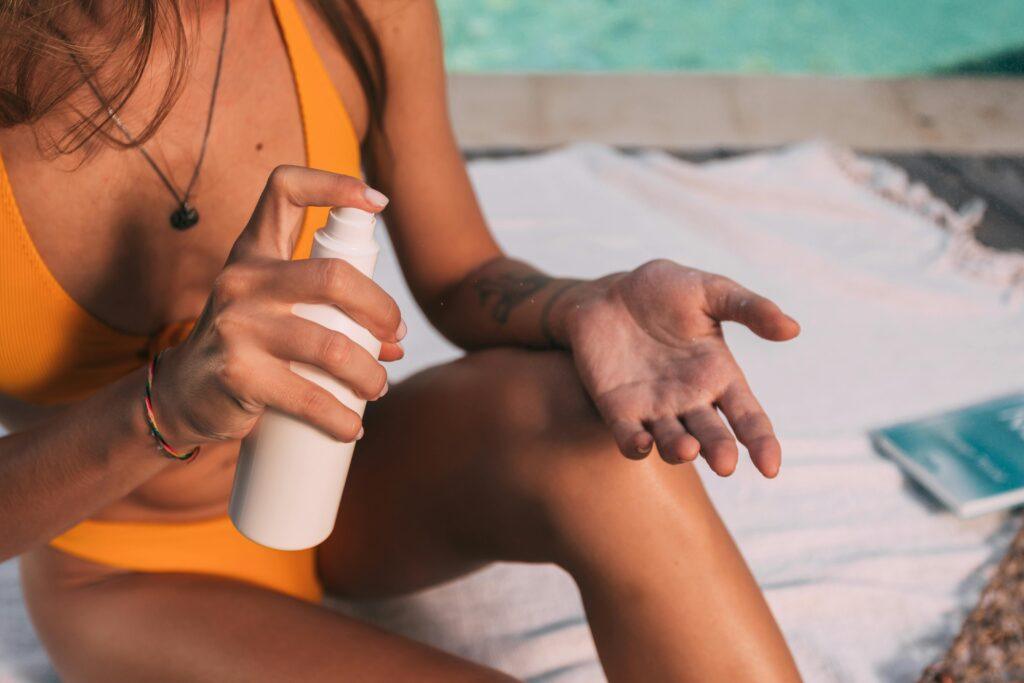
A brief review of top sunscreen sprays
- Full-body SS with Broad UVA Spectrum 45 by EltaMD, the Best for Sensitive Skin
- Babo Botanicals Baby Skin Mineral SS Spray, SPF30, is ideal for infants and young children.
- Uncomplicated SPF Soft Focus Makeup Setting Spray SPF 50 is perfect for dark skin tones.
- Babo Botanicals Sheer Zinc SS SPF 30 is the best reef option among sprays.
- The most effective anti-ageing spray: Supergoop PLAY Antioxidant Body Mist with Vitamin C SPF 50
- SS with Broad Spectrum SPF 50, KINeSYS Performance, is ideal for athletes.
What makes spray sunscreen a better option?
Sunscreens are helpful all year round, not only in the scorching summer. Wearing complete body protection is a brilliant idea if you’re outside.
Spray-on sunscreens are the most convenient option, whether trying to reach an awkward area or taming a finicky kid who wants to get wet. Based on six criteria, these are the best SS sprays to use all year round.
The method by which we settled on
Here is the list that we compiled:
- health experts’ views on the most critical attributes of each group
- client feedback to evaluate the overall efficacy
- crucial components
- extensive covering area and ability to withstand water
Read Further from more authentic sources:
